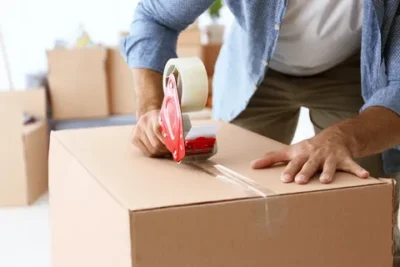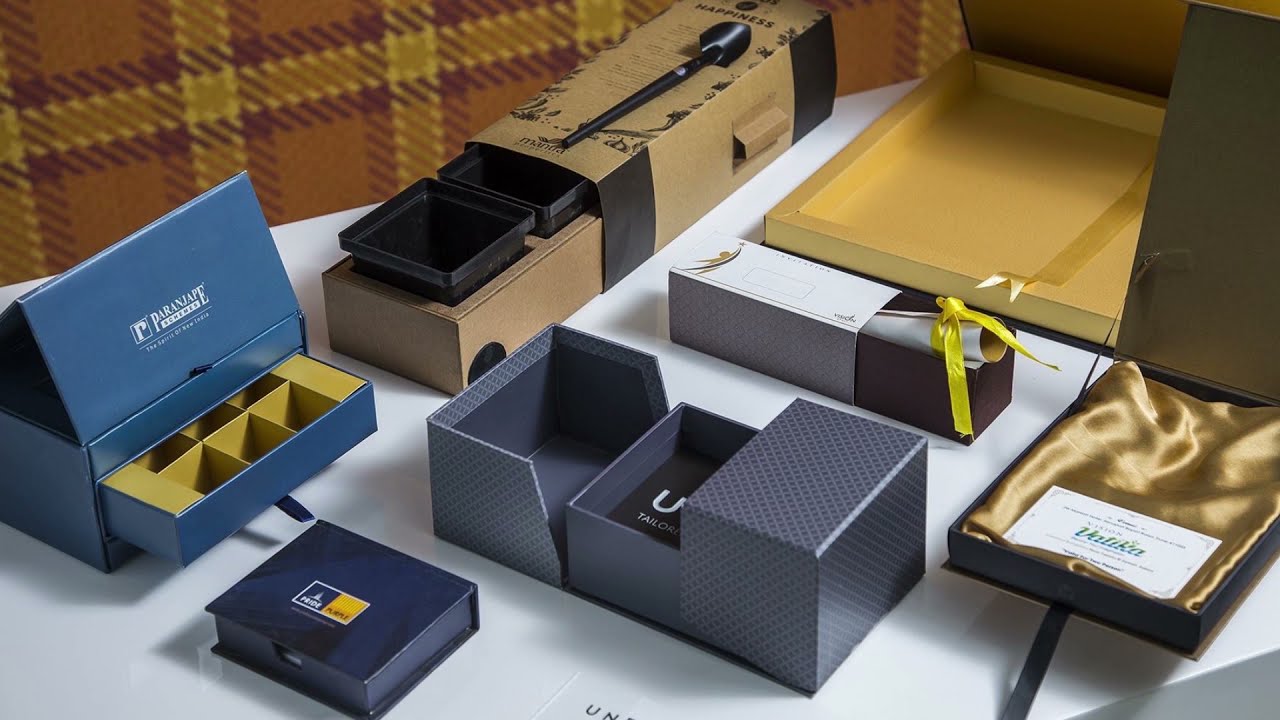In today’s retail landscape, boxed packaged goods are everywhere — from your morning cereal to your latest tech gadget. These packages do more than ju
In today’s retail landscape, boxed packaged goods are everywhere — from your morning cereal to your latest tech gadget. These packages do more than just hold products; they are crucial for protection, branding, customer engagement, and sustainability. This comprehensive article explores the multifaceted role of boxed packaged goods, their evolution, materials, design strategies, and their impact on consumer behavior.
What Are Boxed Packaged Goods?
Boxed packaged goods are products that come enclosed in boxes made from various materials, predominantly paper-based ones such as cardboard or corrugated fiberboard. These boxes serve as the primary container for the product during storage, transport, and display on retail shelves.
Boxed packaging offers an ideal blend of protection, visibility, and communication, allowing manufacturers and retailers to showcase their products effectively while ensuring they reach consumers in perfect condition.
Why Are Boxed Packaged Goods Essential?
1. Protection of Contents
Boxes act as a physical barrier protecting products from environmental hazards such as dust, moisture, light, and physical damage. This is especially critical for fragile items like electronics, glassware, and perishable food.
2. Brand Presentation and Marketing
The exterior box is a brand’s first impression. Its design, colors, fonts, and graphics help communicate the product’s identity, attract buyers, and differentiate it from competitors. Creative packaging can significantly boost product appeal and sales.
3. Consumer Convenience
Boxes often provide functional benefits such as easy opening, resealing, carrying handles, or compartmentalization of multiple items. They make products easier to transport and store, enhancing the overall consumer experience.
4. Information Delivery
Boxed packaging offers space for detailed product information including ingredients, usage instructions, nutritional facts, barcodes, certifications, and regulatory compliance labels, helping consumers make informed decisions.
5. Sustainability Efforts
With growing environmental awareness, many boxed packages are now designed using recyclable, biodegradable, or compostable materials. Brands are also reducing packaging size and material waste, contributing to eco-friendly initiatives.
Common Materials Used in Boxed Packaging

Cardboard
Lightweight and versatile, cardboard is widely used for consumer goods such as cereals, cosmetics, and pharmaceuticals. It’s easy to print on, can be recycled, and supports a variety of structural designs.
Corrugated Fiberboard
Known for its strength and cushioning effect, corrugated fiberboard is ideal for shipping heavier or fragile items like electronics, appliances, and glass bottles. It consists of a fluted inner layer sandwiched between two flat liners.
Paperboard
Thinner and less rigid than corrugated fiberboard, paperboard is often used for packaging lightweight items like medicines, frozen foods, and confectionery.
Composite and Plastic-Coated Boxes
Some boxes combine paperboard with plastic coatings or films to improve moisture resistance or durability, especially for food and hygiene products.
Design Elements in Boxed Packaged Goods
Structural Design
The box must securely house the product, preventing movement that could cause damage. Designers often include custom inserts or partitions to protect individual components or keep multiple items organized.
Visual Appeal
Colors, typography, imagery, and finishes (glossy, matte, embossing) are chosen to attract attention and convey the brand’s story. Transparency windows can also showcase the product inside.
User-Friendly Features
Innovations like tear strips, resealable seals, handles, or stackable shapes improve user experience, making products easier to access, store, and reuse.
Regulatory Compliance
Packaging must include legally required information such as safety warnings, expiry dates, ingredient lists, and recycling instructions to comply with industry standards.
Trends Shaping the Future of Boxed Packaged Goods
Sustainability at the Forefront
Consumers increasingly prefer brands with environmentally responsible packaging. This trend drives innovation in materials (e.g., plant-based fibers), production processes, and lifecycle management.
Smart Packaging Integration
Incorporating QR codes, NFC tags, or augmented reality experiences enables interactive marketing, product authentication, and access to detailed information, enhancing consumer engagement.
Minimalist and Transparent Design
Simplicity and transparency are key, with many brands adopting clean, straightforward designs that emphasize authenticity and trust.
Personalization and Limited Editions
Custom packaging options, from personalized prints to seasonal or limited-edition boxes, foster deeper connections with customers and encourage repeat purchases.
Advantages of Boxed Packaged Goods for Businesses and Consumers
- Enhanced Product Protection: Reduces returns and damage-related costs.
- Brand Differentiation: Unique packaging sets products apart on crowded shelves.
- Improved Consumer Satisfaction: Convenient and informative packaging enhances user experience.
- Sustainability Credentials: Eco-friendly packaging builds goodwill and complies with regulations.
- Streamlined Logistics: Stackable and durable boxes facilitate easier handling and transportation.
Challenges and Considerations
While boxed packaging offers many benefits, challenges include:
- Cost Implications: High-quality or custom-designed boxes can increase production expenses.
- Environmental Impact: Despite advancements, packaging waste remains a concern if not managed properly.
- Supply Chain Complexity: Sourcing sustainable materials and adapting to diverse regulatory requirements can be demanding.
- Consumer Expectations: Balancing attractive design with sustainability and functionality requires innovation.
Conclusion
Boxed packaged goods play a vital role in the retail ecosystem, bridging the gap between product protection, marketing, and consumer convenience. As environmental concerns and technological advancements reshape consumer expectations, brands must innovate to create packaging solutions that are visually appealing, sustainable, and functional.
The future of boxed packaging lies in smart materials, interactive designs, and a commitment to reducing ecological footprints, ensuring that these goods continue to meet the evolving needs of both businesses and consumers.
FAQs About Boxed Packaged Goods
Q1: What types of products typically come in boxed packaging?
Products ranging from food, beverages, and cosmetics to electronics, toys, and pharmaceuticals commonly use boxed packaging.
Q2: Is boxed packaging recyclable?
Most cardboard and paperboard boxes are recyclable. However, boxes with plastic coatings or mixed materials may require special disposal methods.
Q3: How does boxed packaging affect product freshness?
Boxes can be designed to protect products from moisture, light, and contamination, thereby helping to maintain freshness and quality.
Q4: Can boxed packaging be customized to suit brand needs?
Absolutely. Boxes can be tailored in size, shape, color, printing style, and features to align with brand identity and functional requirements.
Q5: What materials are most environmentally friendly for boxed packaging?
Recycled cardboard, biodegradable paperboard, and plant-based fibers are among the most eco-friendly materials.
Q6: How does boxed packaging improve customer experience?
Features like easy-open tabs, resealable closures, handles, and clear product information make boxed goods more user-friendly.
Q7: Are there innovations in boxed packaging technology?
Yes, including QR codes for product info, NFC for authentication, and augmented reality for enhanced marketing.
Q8: What role does packaging play in marketing?
Packaging serves as a critical marketing tool, influencing consumer perception, brand recall, and purchase decisions.
Q9: How can companies balance cost and quality in boxed packaging?
By selecting appropriate materials, optimizing box design, and investing in efficient production processes, companies can balance cost and quality.
Q10: What environmental challenges does boxed packaging face?
Packaging waste, resource consumption, and recycling challenges are key environmental concerns requiring ongoing innovation.
More Info: primereport




COMMENTS